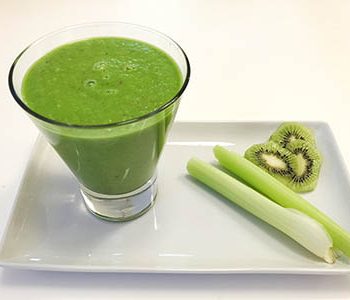With all the colourful packaging and sweet flavours, I wouldn’t be surprised if you think that vaping is cool and a safe option, especially if you have teenagers who also use vapes. In fact, vaping has been hailed as safer than cigarettes, which has helped fuel the trend of vaping over the past few years. Head to any high street in the UK and you’ll soon find the local vape shop (or three). However, there is a huge danger to this modern practice that no-one with any authority seems to want to talk about… and that’s an unhealthy reality.
Vaping, which is often perceived as a safer alternative to traditional tobacco smoking, has gained in popularity over the past decade or so. However, new research and clinical data indicate that this trend carries some significant health risks, because of the chemical composition of the e-liquids used and their impact on the respiratory and cardiovascular systems. Not to mention the potential for users to become even more addicted than they would have done by inhaling nicotine from tobacco.
E-liquids, which are the substances that are vaporised, typically contain a mixture of nicotine, propylene glycol, vegetable glycerin and various artificial flavourings. And while these ingredients are generally recognised as being safe for consumption in ultra processed food (which my clients already know is extremely unhealthy), their safety when inhaled is far less certain. For instance, propylene glycol and vegetable glycerin are responsible for producing the vapour. However, when heated, they can degrade into toxic compounds such as formaldehyde and acrolein, which are known irritants, environmental pollutants and carcinogens (substances that cause cancer).
And when it comes to the chemicals used to flavour the e-liquids, these can also produce harmful byproducts. For example, diacetyl, a chemical used in buttery flavours, has been linked to a condition known as popcorn lung or bronchiolitis obliterans (BO), which is a serious and irreversible lung disease.
Plus, e-liquids and vaping products aren’t subject to the same level of regulation as traditional tobacco products. This lack of oversight means that there are inconsistencies in product quality and safety across the many brands available, which also increases the risk of adverse health effects.
Take Your Breath Away
What all of this means is that inhaling vaporised e-liquids has significant detrimental implications on the lungs. Several studies have highlighted the harmful effects of vaping on the respiratory system, including:
- Airway irritation and inflammation: Vaping can irritate the airways and lead to their inflammation. This is particularly concerning for those who have pre-existing respiratory conditions, such as asthma or chronic obstructive pulmonary disease (COPD), because it can exacerbate symptoms and lead to worsening lung function.
- Impaired immune response: Vaping impairs the immune response of the lungs, making you more susceptible to infections like pneumonia and bronchitis. This is partly due to the toxic effects of the inhaled chemicals on the lung’s immune cells.
- Long-term damage: The long-term effects of vaping aren’t yet fully understood, but there’s growing concern that chronic exposure to the vapour could lead to conditions such as chronic bronchitis and other lung diseases.
Vaping is also associated with significant risks to the cardiovascular system, which can have severe implications on your overall health. For example, the nicotine in e-liquids stimulates the release of adrenaline, which increases the heart rate and elevates blood pressure. This can strain the cardiovascular system and boost your chances of developing heart disease and stroke.
The trend has been shown to cause dysfunction in the endothelium, which is the inner lining of the blood vessels, impairing blood flow and increasing the risk of heart attacks and strokes. The chemicals used in e-liquids can also cause oxidative stress and inflammation in the vascular system, which will further contribute to these adverse effects.
In addition, some studies have suggested that vaping may increase the risk of blood clots, which can further elevate the risk of cardiovascular events. The chemicals in e-cigarette vapour can cause blood platelets to become sticky, which will increase the likelihood of clot formation.
Behavioural Implications
One of the most concerning aspects of vaping is its potential to cause nicotine addiction, particularly among the many young people who think that it is better for them than smoking tobacco. This is because many e-liquids contain very high concentrations of nicotine, which can lead to addiction, even with relatively short-term use. In addition their ease of use and appealing flavours make them particularly attractive to teenagers and young adults, which is leading to a new generation of nicotine addicts. And the fact that nicotine addiction has a significant effect on adolescent brain development, causing impaired cognitive function and mood disorders, means becoming addicted to vapes at a younger age means increased health problems later in life .
And even if you don’t vape yourself, if one of your loved ones puffs regularly, the secondhand vapour means that those including children and pregnant women will also be exposed to the harmful chemicals present in the e-liquids, leaving them at risk of potential health issues. In addition, the disposable nature of vaping products contributes to environmental waste because of the plastic and lithium batteries, which not only harm the environment, but also wildlife.
So, while vaping is often marketed as a safer alternative to smoking, the evidence clearly indicates that it poses significant health risks, especially among younger users. The inhalation of vaporised chemicals can lead to respiratory and cardiovascular problems, as well as nicotine addiction and a host of other health issues. Plus, the broader implications for public health and the environment can’t be ignored, so it’s essential that you make the most informed choice to support your overall health and wellbeing, despite the popularity of this sweet smelling trend.
Love, Gaynor x





